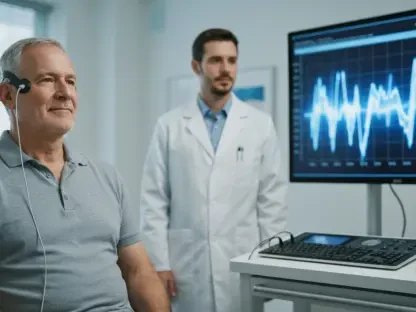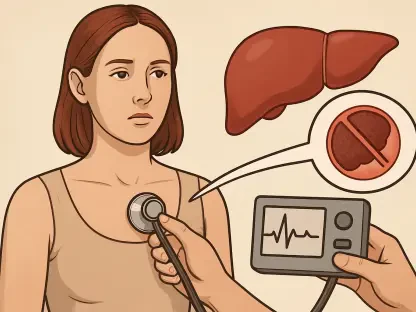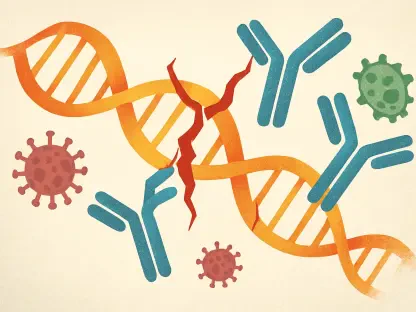The evolution of precision medicine is transforming the landscape of rare disease care, offering new hope through advanced diagnostic and treatment strategies. With the advent of genomic sequencing, patients and families are experiencing a shift from despair to optimism as they navigate complex medical journeys.
The Power of Genetic Diagnosis
Personalized Diagnostic Approaches
Genomic sequencing has revolutionized the diagnostic process for rare diseases. Traditional diagnostic methods often left families without answers, but precision medicine allows for a much more personalized approach. By identifying specific genetic mutations, healthcare providers can offer accurate diagnoses quickly, often breaking the cycle of uncertainty that many families face. The capability to pinpoint the exact genetic cause of a disease paves the way for individualized treatment plans, aligning therapies more closely with the patient’s unique genetic profile.
Moreover, early genetic diagnosis can significantly impact the course of the disease, facilitating timely interventions that can prevent or mitigate severe symptoms. The comprehensive analysis offered by technologies like exome and whole-genome sequencing presents an in-depth understanding of the genetic landscape, enabling doctors to predict disease progression and tailor treatments accordingly. This approach not only improves patient outcomes but also fosters a proactive stance in disease management.
Case Study: Lainey and Leta Moseley
Lainey Moseley’s daughter, Leta, exemplifies the impact of precision medicine. Undiagnosed for 18 years, Leta’s condition was finally identified as CHOPS syndrome through exome sequencing. This breakthrough provided critical insights and connected the Moseley family with others facing similar challenges, illustrating the ripple effect of a precise diagnosis. Determining Leta’s condition ended years of uncertainty and opened up avenues for targeted medical care and support.
The journey of the Moseley family underscores the transformative power of genetic diagnosis. With a definitive identification of CHOPS syndrome, the family could join support networks and explore treatment options tailored to Leta’s specific needs. This case demonstrates how a single genetic diagnosis can revolutionize lives, turning a seemingly insurmountable challenge into a manageable medical condition.
Building Communities Through Shared Diagnoses
Foundation of Support Networks
A diagnosis does more than name a condition; it lays the groundwork for community building. Families who receive a diagnosis can connect with others, sharing experiences and resources. This collective support fosters a sense of belonging and mutual aid, empowering families to advocate effectively. The interconnectedness fostered by a common diagnosis can drive collaborative efforts to push for better care, research, and resources.
Support networks also provide emotional sustenance, which is crucial for families navigating the complexities of rare diseases. Sharing information and strategies on managing the disease can enhance the quality of life for patients and alleviate the sense of isolation often felt by affected families. The strength of these communities lies in their ability to unify individuals towards common goals, amplifying their voices and efforts in the fight for better diagnoses and treatments.
Advocacy Organizations in Action
Organizations like CHOPS Syndrome Global, founded by Lainey Moseley, are pivotal. Despite CHOPS syndrome’s rarity, the group’s advocacy efforts support affected families and drive research forward. These organizations exemplify how community-building initiatives can amplify advocacy and mobilize resources. They bridge the gap between scientific research and the lived experiences of patients, ensuring that the unique needs of rare disease patients are addressed.
Advocacy groups play a vital role in raising awareness, securing funding for research, and influencing policy changes. By engaging with scientific communities and policymakers, these organizations work to ensure that rare diseases receive the attention and resources they deserve. Their efforts illustrate the power of collective action in transforming the landscape of rare disease care, making substantial contributions towards the development of new therapies and the improvement of patient outcomes.
The Technological Leap in Genomics
Advancements in Genetic Sequencing
Precision medicine’s promise lies in advancements such as exome and genome sequencing. These technologies not only enable precise diagnoses but also open pathways for targeted treatments. The documentary “Rare: A Rare Disease Revolution” showcases the transformative potential of genomics, instilling hope among families impacted by rare conditions. The ability to decode entire genomes allows scientists and doctors to understand the underlying genetic mechanisms of rare diseases better.
This level of detail facilitates the development of personalized treatment strategies, potentially revolutionizing therapeutic approaches for conditions that were previously considered untreatable. The proliferation of genetic databases and biobanks has further enhanced research capabilities, enabling large-scale studies that uncover new insights into the genetic basis of rare diseases. This technological leap promises a future where genetic insights drive medical decisions and accelerate the discovery of effective therapies.
Collaborative Scientific Efforts
The push for progress in rare disease research is a collaborative endeavor. Researchers, healthcare providers, and families unite to advance genomic medicine, challenging traditional limits and fostering innovation. This cooperative dynamic accelerates the discovery of treatments and potential cures. Collaboration also extends to international partnerships, where pooling resources and knowledge contributes to a broader understanding of rare diseases.
The integration of patient data from diverse populations enhances the robustness of scientific findings and supports the development of universally applicable treatments. Collaborative efforts are pivotal in overcoming the fragmented nature of rare disease research, creating a cohesive framework that maximizes the impact of genetic discoveries on patient care. By fostering a culture of collaboration, the rare disease community is driving forward a revolutionary change in the way these conditions are understood and treated.
Overcoming Research Challenges
Addressing Prevalence and Attention Gaps
Rare diseases affect significant numbers collectively, yet research investment often prioritizes more common conditions. The small patient populations pose challenges for clinical trials, complicating the path to regulatory approval. Advocacy is essential to highlight these conditions and garner necessary attention and funding. Efforts to improve the design of clinical trials and adaptive trial methodologies are critical in making studies more feasible for rare conditions.
Additionally, developing multi-site and international collaborations can help in recruiting sufficient patient numbers to ensure statistically valid study results. Harmonizing regulations and standards across countries can further streamline the process of conducting rare disease research, making it more efficient and less resource-intensive. By addressing these challenges, the rare disease community can drive more equitable research investment and accelerate the development of new therapies.
The Crucial Role of Parental Advocacy
Parents of children with rare diseases become relentless advocates, organizing research initiatives and lobbying for policy support. Amber Freed’s efforts for her son Maxwell and the founding of SLC6A1 Connect illustrate the depth of parental commitment driving the rare disease movement forward. Parents often navigate complex medical and regulatory landscapes, forging partnerships with researchers and legislators to advance their cause.
Their advocacy plays a critical role in bridging the gap between patients’ needs and systemic support structures, ensuring that the voices of those affected by rare diseases are heard and acted upon. The stories of parental advocates highlight the profound impact that individuals can have in shaping the rare disease landscape, turning personal challenges into catalysts for broader change.
The Future of Precision Medicine in Rare Disease Care
Potential for Treatments and Cures
The potential that precision medicine holds for developing treatments and even cures for rare diseases is unprecedented. Ongoing innovation in genomics continually expands these possibilities, transforming what was once a bleak outlook into one filled with hope. As genetic insights deepen, researchers are better equipped to design therapies that target the root causes of diseases at the molecular level.
Emerging technologies such as gene editing and personalized cellular therapies are ushering in a new era of medicine, where interventions can be tailored precisely to individual genetic profiles. This future vision of healthcare promises not only to alleviate symptoms but also to correct genetic abnormalities, offering the possibility of definitive cures for many rare conditions. The journey towards realizing this potential requires sustained investment in research, development, and the integration of new technologies into clinical practice.
Need for Systemic Support and Policy Change
To fully harness the power of precision medicine, systemic changes are necessary. Streamlined clinical trials, increased funding, and supportive policies can bridge the gap between genomic discoveries and practical, accessible treatments for all affected by rare diseases. Addressing regulatory hurdles and creating incentives for rare disease research are crucial steps in accelerating the development and availability of new therapies.
Ensuring equitable access to genetic diagnostics and treatments is also vital, as disparities in healthcare can limit the benefits of precision medicine to certain populations. Policymakers, researchers, and advocates must work together to create a healthcare environment that supports innovation while prioritizing patient needs. By fostering a holistic approach that integrates scientific advancements with systemic support, the rare disease community can continue to make meaningful strides towards better health outcomes.
Conclusion: A Transformative Journey
The advancement of precision medicine is revolutionizing the field of rare disease care, offering renewed hope through cutting-edge diagnostic and therapeutic methods. This progress is drastically changing the experiences of patients and their families, who once faced overwhelming challenges with little optimism. The emergence of genomic sequencing allows for early, accurate diagnosis, guiding more effective personalized treatments. Patients no longer feel adrift in a sea of medical uncertainty; instead, they embark on their complex medical journeys buoyed by hope and the promise of better health outcomes. This shift from pessimism to optimism signifies a profound transformation in how rare diseases are managed, underscoring the importance of continued investment in precision medicine research. These advancements not only improve quality of life but also pave the way for innovative solutions that were once considered out of reach. The future of rare disease care now holds the potential for unprecedented breakthroughs, giving patients and their loved ones newfound optimism and a bright horizon ahead.









